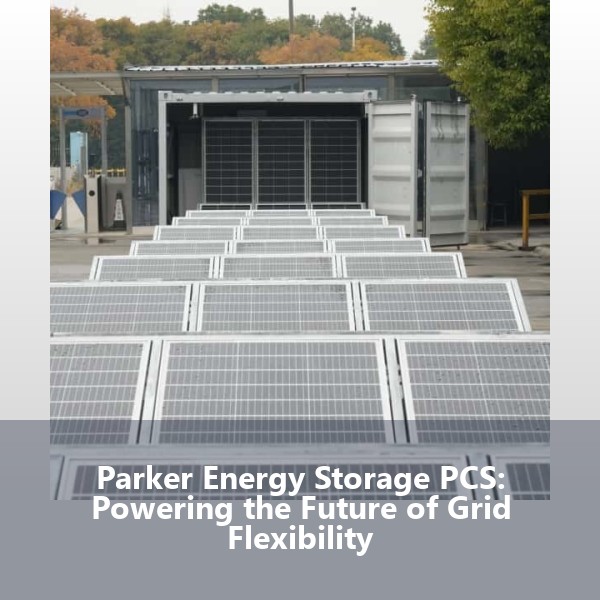Parker Energy Storage PCS: Powering the Future of Grid Flexibility

Why Energy Storage PCS Matters in Modern Grids
Imagine trying to drink from a firehose - that's essentially what renewable energy systems face without proper power conversion. Enter Parker's Energy Storage Power Conversion Systems (PCS), the sophisticated traffic cops of electricity flow. These systems convert DC battery power to AC grid power with 97.5% efficiency, making them crucial for stabilizing our increasingly renewable-dependent grids.
The PCS Evolution: From Simple Converters to Grid Architects
Modern PCS units like Parker's solutions now handle:
- Bidirectional energy flow (charge/discharge cycles up to 10,000 times)
- Frequency regulation within ±0.01Hz accuracy
- Black start capabilities for microgrids
- Advanced thermal management for 40°C+ environments
Market Dynamics: Where Parker Plays to Win
The global energy storage PCS market is growing faster than a lithium-ion battery charging at 3C rate - projected to reach $18.7B by 2030. Parker's strategy focuses on three key segments:
1. Industrial Energy Arbitrage
Manufacturers using Parker PCS systems report 23% average reduction in demand charges. One California factory's 2MW/8MWh system paid for itself in 18 months through peak shaving alone.
2. Renewable Integration Solutions
Parker's 1500V DC systems now handle 3MW power blocks, reducing balance-of-system costs by 15% compared to legacy 1000V architectures. Their "solar smoothing" algorithms can reduce PV curtailment by up to 40%.
3. Microgrid Controllers
The latest Parker PCS units incorporate grid-forming inverters that mimic synchronous generator behavior. A Caribbean resort microgrid using this tech maintained 99.999% uptime through three hurricanes last season.
Technical Differentiators: More Than Just Metal Boxes
Parker's secret sauce lies in their adaptive control algorithms. Their latest PCS models feature:
- Self-learning load prediction (accuracy improved 32% over previous gen)
- Cybersecurity protocols meeting NERC CIP-014 standards
- Modular design allowing capacity upgrades without downtime
One engineer joked their PCS units have more decision-making power than middle management - they autonomously choose optimal operating modes from 27 different strategies based on real-time market prices and equipment health.
The Road Ahead: Challenges and Opportunities
While Parker leads in industrial applications, the residential market remains a battleground. New entrants offering $0.08/Watt residential PCS solutions are pushing traditional players to innovate. However, Parker's new 500kW commercial/industrial hybrid units could be the "Swiss Army knife" of energy storage, combining:
- BESS integration
- EV charging management
- Hydrogen electrolyzer control
The company's recent partnership with a major cloud provider enables AI-driven predictive maintenance, reducing service calls by 55% in pilot projects. As utilities adopt 5-minute settlement markets, Parker's sub-second response PCS units are becoming the grid's new reflex system.
- Pre: Fats vs Sugars Energy Storage: Which Fuel Does Your Body Prefer?
- Next: Cellular Fuel and Energy Storage: Nature’s Blueprint for a Sustainable Future
Related Contents

Energy Storage Grid Energy Technologies: Powering the Future Smart Grid
Let’s face it – today’s electrical grids have more in common with a 1980s flip phone than a modern smartphone. That’s where energy storage grid energy technologies come crashing in like a rockstar at a library convention. These innovations aren’t just cool gadgets; they’re rewriting the rules of how we store and distribute electricity. Imagine being able to save solar energy like leftover pizza and reheat it when needed. Deliciously efficient, right?

Grid-Side Energy Storage Market: Powering the Future of Energy Flexibility
Ever wondered how electricity grids handle those awkward moments when solar panels go to sleep at sunset or wind turbines take a coffee break? Enter grid-side energy storage – the ultimate wingman for modern power systems. This $119.3 billion market (and growing at 15.8% annually) isn't just about big batteries – it's rewriting the rules of energy management.

Grid-Scale Battery Energy Storage Systems: Powering the Future Grid
Imagine your electricity grid as a high-stakes juggling act – utilities must balance power generation and consumption within milliseconds. This is where grid-scale battery energy storage systems (BESS) step in like nimble acrobats, catching renewable energy surpluses and releasing them during peak demand. The global BESS market is projected to grow from $4 billion to $15 billion by 2028, proving this isn't just another flashy tech trend – it's the backbone of our clean energy transition.
